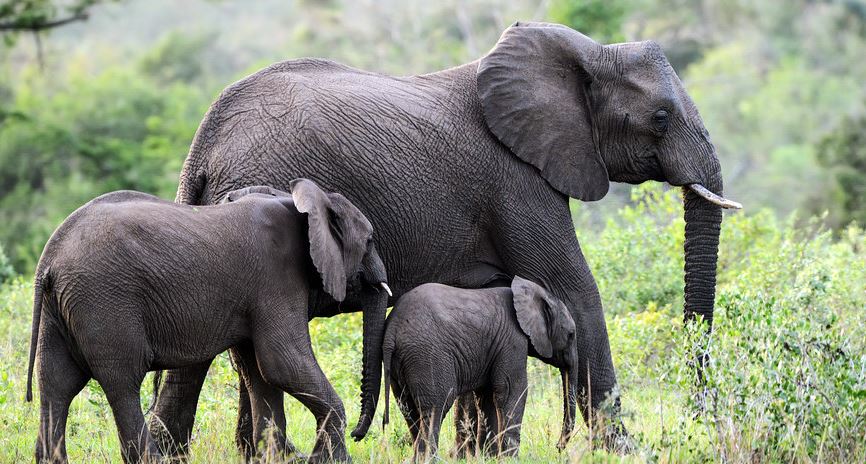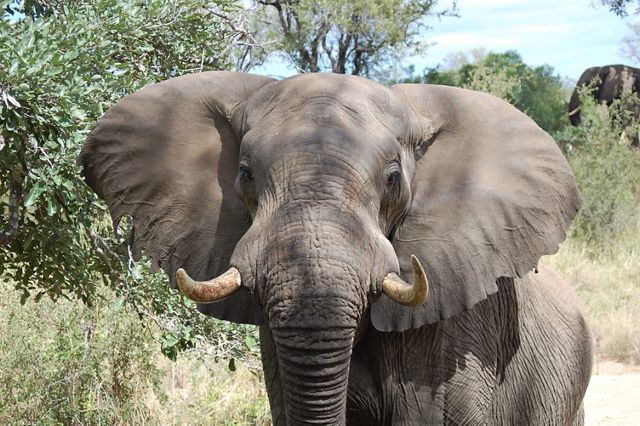7 Facts About The African Bush Elephants : The African bush elephant which is commonly known as the African Savannah Elephant is categorized among the popular big five animals that are sought after by the tourists in Africa. It’s considered to be the largest land living animal in the world. The specie is bigger than the African forest elephant as well as the Asian elephants and it’s distributed across 37 African countries and lives in forests, savannah grassland, woodlands, agricultural land and wetlands. Facts about the African bush elephant include;
- The African Bush Elephant is scientifically known as Loxodonta Africana. These are identified by the highly skillful trunk, long curved tusks and large ears. Both males and females have tusks which begin to show once they are 1 to 3 years old and they grow throughout their life.
- The tusks grow from deciduous or milk teeth which is known as tushes that grow in the upper jaws and consist of a crown, root and pulpal cavity which grow immediately after birth. The longest tusk of the African bush elephant is 3.51 meters and 117 kilometers.
- They use the trunk for smelling, breathing, caressing their young ones, detecting vibrations, sucking up water and grasping objects such as tree trunks, logs and much more. The tip of the trunks comprise of two opposite extensions which contribute to extreme dexterity.
- The life span of the African bush elephant is between 70 and 75 years with generation length of about 25 years.
- African bush elephants are social mammals that live and travel in herds consisting of cows and their offspring. Adult males are referred as bulls and live alone in small bachelor groups.
- The African bush elephant weigh 6000 kilograms which is approximately 7 tons and can measure up to 3.3 meters at the shoulder. Adult bulls can reach a shoulder height to 4 meters. The elephants attain their height when they complete the development of the long-bone epiphyses [top part of the femur bone], which occurs in males at the age of 40 and the females at the age 25.
- Female African bush elephants start to ovulate at the age of 11 years and are in estrus for 2 to 6 days. In captivity, adult females have estrous cycle lasting 14 to 15 weeks. African bush elephants mate during the rainy season and bulls in musth [adult males on heat] cover long distances in search of the females and associate with large family groups. African bush elephants have a gestation period of 22 months and give birth to one calf every 2 to 3 years.
- The African bush elephants are listed as vulnerable species under the IUCN red list. Their survival in the wild is being threatened by factors such as poaching, illegal trade on ivory and other body parts, encroachment on their habitat and deforestation.

7 Facts About The African Bush Elephants - The bush elephants have large ears which help to regulate the excess heat caused by the hot African sun and their ears are also used to communicate with one another. The ears are used in conjunction with soles of their feet and their trunk and helps them to hear sounds from a long distance. Thus an elephant can hear another elephants call from a far as 4 kilometers.
- elephants in general are herbivorous animals that is to say they feed on grass, creepers and herbs. The adult African bush elephant consumes up to 150 kilograms of vegetation per day but during the dry season they feed on leaves and bark. High levels of calcium found in the tree barks helps in the development of their bones. The elephants can as well feed on fruits such as guavas, papaya, bananas, stems and seeds of maize, sorghum and sugarcanes. They as well feed on minerals from the termite mounds and mineral licks.
The African bush elephants are spotted by the tourists while on game drives in the savannah national park in Africa and other parks include Akagera national park in Rwanda, Murchison falls national park, Queen Elizabeth national park, kidepo valley national park, and Lake Mburo national park in Uganda, Masai Mara national park in Kenya and Serengeti national park in Tanzania
